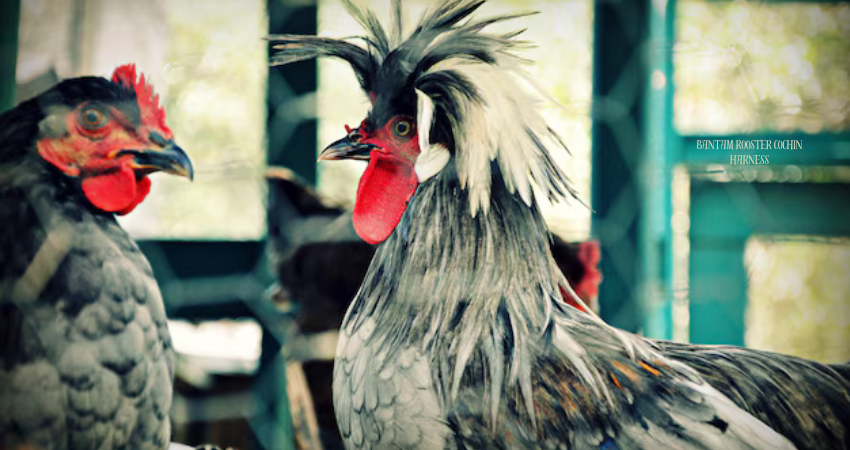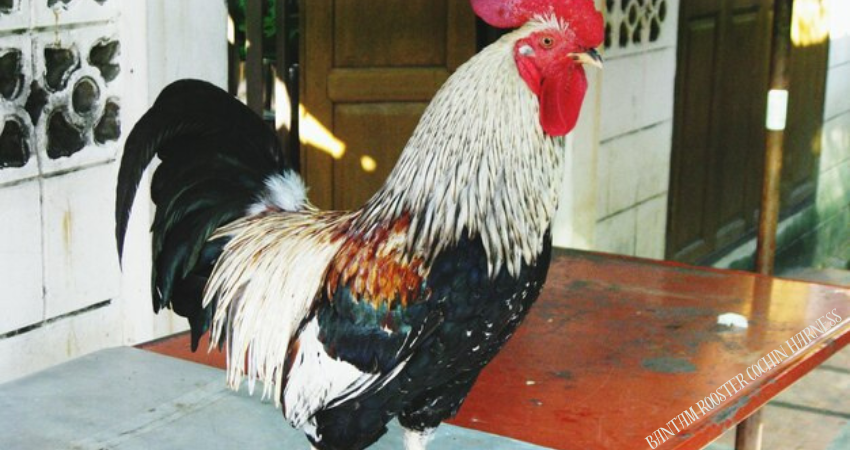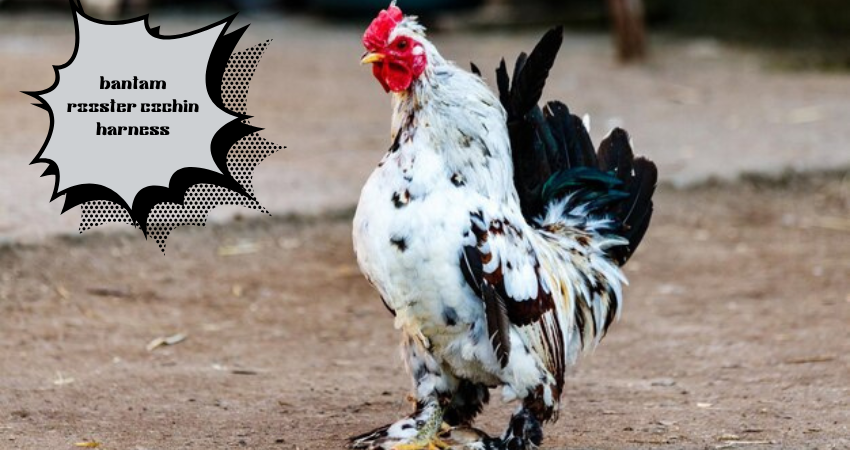Beneath the whispers of history and amidst the gentle clucking of barnyards, the bantam rooster cochin harness stands as a symbol of both aesthetic charm and agricultural heritage. These small yet regal birds, swathed in their feathery opulence, have captured human hearts for centuries. Alongside their rise to prominence comes an accessory of great intrigue: the Cochin harness. A tool of practicality and care, the harness holds within its straps the rich interplay of function and tradition. This tale is as much about the harness as it is about the bantam Cochin rooster itself—a story of humble beginnings, cultural intersections, and the enduring human desire to weave beauty with purpose.
Chapter 1: The Majesty of the Bantam Cochin
Before delving into the origins of the bantam rooster cochin harness, one must first marvel at the bird it was designed for: the bantam rooster Cochin. With their flowing feathers and diminutive stature, these miniature marvels exude a charm that belies their utility. Originating in China, the Cochin fowl rose to prominence during the 19th century when they were gifted to Queen Victoria of England. This royal introduction sparked a “hen craze” across Europe, where breeders and enthusiasts were enchanted by their plump forms, soft plumage, and gentle demeanor.
Yet, it wasn’t just their aesthetic appeal that endeared the bantam Cochin to humanity. These birds were symbols of status and refinement, gracing the gardens of aristocrats and farmers alike. Their docile nature and penchant for companionship transformed them into living works of art, perfectly suited for those who sought solace in the simple rhythms of life.

Chapter 2: The Humble Beginnings of the Cochin Harness
While the beauty of the Cochin was undeniable, the practicalities of tending to such a breed required innovation. The origins of the Cochin harness are shrouded in mystery, much like the quiet corners of history where necessity meets invention. Early accounts suggest that small-scale farmers and hobbyists developed rudimentary harnesses as a way to protect their beloved bantams from injury during transport or while showcasing them in poultry exhibitions.
Handwoven straps of leather or coarse linen were among the first iterations of these harnesses. Though crude by modern standards, they served their purpose well. The harnesses allowed handlers to maintain control over their birds while preventing undue stress. The inclusion of a soft padding beneath the straps ensured the delicate feathers of the Cochin remained pristine—a vital consideration for birds destined for competition.
Chapter 3: The Golden Age of Poultry Shows
The 19th century was a time of flourishing creativity and passion for ornamental poultry. Across Europe and North America, agricultural societies organized grand exhibitions, celebrating the art of animal husbandry. The bantam Cochin rooster, with its luxurious feathering and proud gait, became a star attraction.
It was during this golden age that the Cochin harness evolved from a functional accessory into a work of craftsmanship. Artisans began tailoring harnesses with fine fabrics, embroidering them with intricate patterns, and adorning them with tiny brass buckles. The harnesses, much like the birds themselves, became symbols of prestige. Owners would commission bespoke harnesses that reflected their personal tastes and the unique beauty of their roosters.
Chapter 4: A Crossroads of Culture
As the popularity of the Cochin spread across continents, so too did the variations in their harnesses. In Japan, the art of poultry exhibition intertwined with the meticulous aesthetics of traditional craft. Harnesses were crafted with silk threads and dyed using ancient techniques, reflecting the cultural reverence for nature and artistry. In the American Midwest, leatherworkers incorporated the rugged simplicity of frontier craftsmanship, producing sturdy harnesses capable of withstanding the challenges of rural life.
This cultural exchange enriched the design and utility of the Cochin harness, creating a tapestry of styles and techniques. Each harness became a silent testament to the region and people who crafted it, blending local materials and traditions with a shared love for the bantam Cochin.
Chapter 5: The Harness in Modern Times
As the 20th century dawned, the world underwent profound changes. Industrialization transformed agriculture, and with it, the way humans interacted with their animals. Yet, the bantam Cochin and its harness remained steadfast, enduring as symbols of a simpler, more connected era.
In recent decades, the Cochin harness has experienced a renaissance among poultry enthusiasts and backyard farmers. Modern materials such as nylon and neoprene have replaced traditional leather and linen, offering improved durability and comfort. Adjustable straps and ergonomic designs ensure a snug fit, catering to the diverse needs of today’s bantam Cochins.
Moreover, the harness has found new purpose beyond the exhibition hall. Pet owners use them for gentle training or as a means to safely allow their birds to roam in urban gardens and parks. The harness, once a tool of practicality, now bridges the gap between tradition and the contemporary human desire for companionship with animals.
Chapter 6: Craftsmanship as a Form of Expression
The art of crafting a Cochin harness has itself become a cherished tradition. In small workshops and homesteads, artisans pour their love and creativity into each piece. Hand-stitched seams, vibrant dyes, and personalized embellishments transform these humble accessories into heirlooms.
For many, the act of creating or choosing a harness is a deeply personal journey. It is an opportunity to celebrate the unique personality of their bantam Cochin, to honor its beauty and spirit. Some owners even collaborate with artists to design one-of-a-kind harnesses, incorporating motifs and colors that reflect their bond with their bird.
Chapter 7: The Spiritual Bond Between Human and Bird
At its heart, the story of the Cochin harness is a story of connection. It is about the quiet moments shared between handler and rooster, the trust that blooms when one creature entrusts its safety to another. The harness symbolizes this bond, a tangible representation of care and respect.
For the bantam Cochin, wearing the harness is an act of gentle cooperation, a reflection of its placid nature. For the human, it is an opportunity to nurture and celebrate a creature that brings joy and beauty into the world. Together, they form a partnership that transcends the barriers of species—a reminder of the profound relationships humans can forge with the natural world.

Chapter 8: FAQs About the Cochin Harness
Why do bantam Cochin roosters need a harness?
A harness provides safety and control, especially during transportation, exhibitions, or outdoor activities. It ensures the bird’s comfort while protecting its delicate plumage.
Are harnesses only used for exhibitions?
No, they are also used for training, outdoor roaming, and as a means to safely handle birds in various settings.
What materials are best for a Cochin harness?
Modern harnesses often use nylon or neoprene for durability, while traditional harnesses may feature leather or soft cotton.
Can a harness harm the rooster?
When properly fitted, a harness is safe and comfortable. It’s essential to choose the right size and ensure the straps do not rub or restrict movement.
How do I train my rooster to wear a harness?
Introduce the harness gradually, allowing the rooster to become accustomed to its presence. Use gentle encouragement and rewards to create a positive association.
Where can I purchase or commission a custom Cochin harness?
Many online retailers and local artisans specialize in poultry harnesses. Custom options are often available through small-scale craftspeople.
Conclusion: A Legacy Carried Forward
The bantam rooster cochin harness is more than just an accessory; it is a living thread in the fabric of agricultural history. It represents humanity’s enduring fascination with beauty, utility, and the profound connections we share with the animals in our care. As we gaze upon a proud Cochin adorned in its elegant harness, we are reminded of the timeless dance between practicality and artistry, tradition and innovation.


